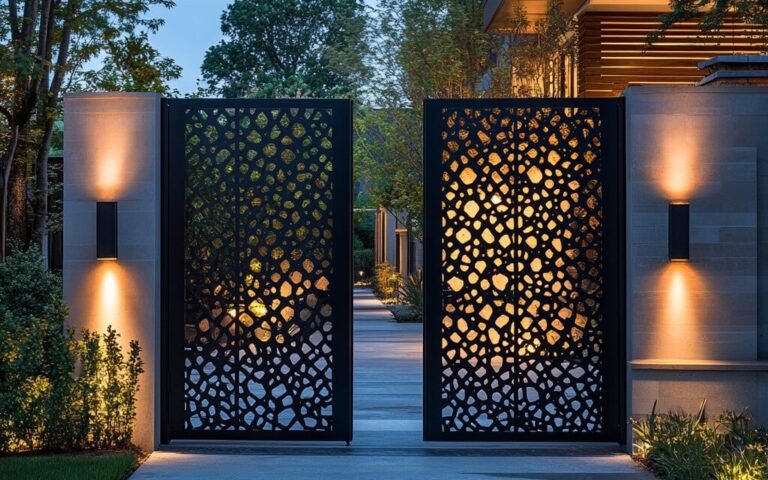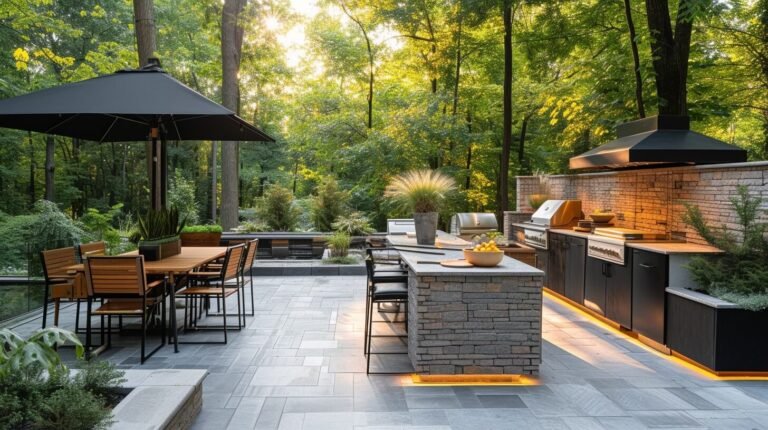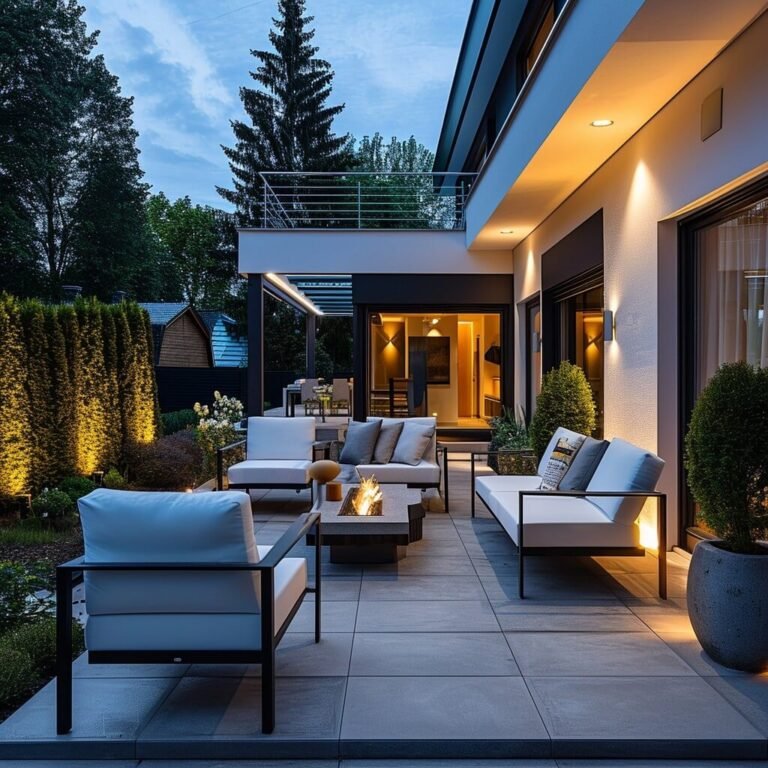
This world we live in is full of many debates, On which types are or are better, Having spent countless hours researching and testing various outdoor lighting solutions, I am excited to share my insights about the Different Types of Solar String Lights LED vs Incandescent with you.
Which is the best? Solar String Lights LED vs Incandescent
Before diving into the solar string lights LED vs incandescent debate, let’s make sure we’re all on the same page about what solar string lights are. As the name suggests, these little devices harness the sun’s energy to light up our outdoor spaces. Pretty cool, right?
Here’s how they work: during the day, a small solar panel soaks up sunlight, converting it into electrical energy, stored in a rechargeable battery. When the sun goes down, the lights automatically switch on, using that stored energy to keep your outdoor area glowing until dawn.
The basic components of solar string lights include:
- Solar panel
- Rechargeable battery
- LED or incandescent bulbs
- Controller (the brains of the operation)

LED Solar String Lights: Illuminating the Future
Now, let’s talk about LED solar string lights. LED stands for Light Emitting Diode, which sounds techy, but don’t worry – I’ll break it down for you.
LED lights work by passing an electrical current through a microchip, which illuminates tiny light sources we call LEDs. The result? A bright, efficient light simple as that.
Here are some key points about LED solar string lights:
- Energy Efficiency: This is where LEDs shine (pun intended!). They use up to 75% less energy than their incandescent counterparts. In my experience, this translates to longer-lasting illumination, especially on those shorter winter days when sunlight is at a premium.
- Longevity: LEDs are the marathon runners of the lighting world. Many can last up to 50,000 hours or more. I’ve had some LED solar lights in my backyard for years, and they’re still going strong!
- Durability: LEDs are solid-state lights, meaning they don’t have fragile components like filaments. This makes them more resistant to breakage and vibrations. Trust me, this is a big plus when you’re dealing with outdoor elements.
- Color Options: Here’s where it gets fun! LEDs can produce a wide range of colors without the need for filters. Want to switch from warm white to cool blue? With many LED options, it’s as easy as pressing a button on a remote.

Incandescent Solar String Lights: The Classic Glow
Ah, incandescent lights – the old faithful of the lighting world. These are the lights many of us grew up with, and they still have a place in our hearts (and our gardens!).
Incandescent bulbs work by heating a wire filament until it glows, producing that warm, familiar light we all know and love. Here’s what you need to know about incandescent solar string lights:
- Warm Glow: There’s something about the quality of light from an incandescent bulb that just feels cozy. It’s warm, it’s inviting, and it can create a nostalgic atmosphere that’s hard to beat.
- Lower Initial Cost: Generally, incandescent options are cheaper upfront. If you’re working with a tight budget for a one-time event, this could be a deciding factor.
- Simple Technology: Incandescent bulbs are straightforward, which can make them easier to replace if one burns out.
- Heat Production: One thing to note – incandescent bulbs produce more heat than LEDs. While this might be welcome on a cool evening, it does mean they’re using more energy to produce light.

Battle of the strings: LED vs. Incandescent Performance
Now that we’ve covered the basics, let’s pit these two lighting against each other in a head-to-head comparison.
Brightness: When it comes to lumens (the measure of light output), LEDs generally have the edge. They can produce a brighter light while consuming less power. However, if you’re going for a softer, more subdued look, incandescent might be your go-to.
Color Temperature: This is where personal preference comes into play. LEDs can offer a range of color temperatures, from warm white to cool daylight. Incandescents, on the other hand, typically provide that classic warm glow.
Heat Emission: As I mentioned earlier, incandescent bulbs produce more heat. While this isn’t usually a safety concern for outdoor lights, it does impact energy efficiency. LEDs operate much cooler, converting more energy directly into light.
Battery Life: In my experience, LED solar string lights tend to last longer on a single charge. This is especially noticeable on cloudy days when the solar panel might not get as much sun.
Cost Considerations: Initial Investment vs. Long-term Savings
Let’s talk money – after all, we all want to get the best bang for our buck, right?
Upfront Costs: Generally, LED solar string lights have a higher initial price tag. However, prices have been coming down as the technology becomes more widespread.
Energy Savings: This is where LEDs shine best. Their energy efficiency translates to lower operating costs over time.
Replacement Frequency: Remember those 50,000 hours I mentioned for LEDs? That’s a lot of summer nights! Incandescent bulbs typically last around 1,000 to 2,000 hours, meaning you’ll be replacing them more often.
In one of my backyard makeover projects, I initially balked at the cost of LED solar string lights. After calculating the long-term savings from fewer replacements and better energy efficiency, I realized they were the more cost-effective choice in the long run.
Environmental Impact: Which Option is Greener?
As an avid gardener, I’m always thinking about my environmental impact. So, how do these two options stack up in terms of eco-friendliness?
Energy Consumption: LEDs are the clear winner, using significantly less energy than incandescent.
Lifespan: The longer lifespan of LEDs means fewer replacements and, consequently, less waste over time.
Materials: Both types of lights contain materials that can be recycled, but it’s important to dispose of them properly. Many home improvement stores offer recycling programs for light bulbs.
Production: The production of both types of lights has environmental impacts, but the longer lifespan of LEDs helps to offset this.
Aesthetic Appeal: Setting the Right Mood
At the end of the day, the choice between LED and incandescent often comes down to the look and feel you’re going for in your outdoor space.
Light Quality: Incandescent bulbs are known for their warm, inviting glow. They’re great for creating a cozy, intimate atmosphere. LEDs, while initially known for a cooler light, now come in a range of color temperatures. You can find LEDs that mimic that warm incandescent glow or opt for cooler tones for a more modern look.
Design Options: LED and incandescent solar string lights come in styles. From classic globe lights to whimsical shapes, you’re sure to find something that fits your aesthetic.
Versatility: I’ve found LED lights to be more versatile overall. Many come with remote controls that allow you to change colors, adjust brightness, or set timers. This can be great for adapting your lighting to different occasions or seasons.
Installation and Maintenance: Keeping Your Lights Shining Bright
No matter which type of light you choose, proper installation and maintenance are key to getting the most out of your solar string lights.
Installation: Both types are generally easy to install. The most important factor is placing the solar panel in a spot that gets plenty of direct sunlight.
Weatherproofing: Look for lights rated for outdoor use. In my experience, both LED and incandescent options can stand up to the elements if they’re well-made.
Cleaning: Regular cleaning of the solar panels and lights will help maintain their efficiency. A quick wipe with a damp cloth usually does the trick.
Troubleshooting: If your lights aren’t performing well, check the solar panel first. Make sure it’s clean and positioned correctly. Also, remember that battery performance can degrade over time, so you might need to replace the battery after a few years.
Conclusion: Lighting Up Your Outdoor Oasis
So, which is better – LED or incandescent solar string lights? Well, like many things in life, there’s no one-size-fits-all answer. It depends on your specific needs, preferences, and circumstances.
If energy efficiency, longevity, and versatility are your top priorities, LED solar string lights are probably your best bet. They’ve certainly won me over for most of my outdoor lighting needs.
However, if you’re looking to create a warm, nostalgic atmosphere and don’t mind replacing bulbs more frequently, incandescent solar string lights might be just the ticket.
Personally, I’ve found that a combination of both can create a really interesting and dynamic outdoor lighting scheme. I use LED lights for my year-round outdoor illumination and bring out the incandescent string lights for special occasions to add that extra touch of warmth and coziness.
Remember, the best outdoor lighting is the kind that makes you want to stay outside just a little bit longer. So whether you go with LED, incandescent, or a mix of both, the most important thing is that your outdoor space feels like home.
Now, if you’ll excuse me, I think it’s time for me to head out to my patio and enjoy my twinkling wonderland. Here’s to bright nights and beautiful outdoor spaces!
FAQs
- Q: How long do solar string lights typically last?
A: LED solar string lights can last up to 50,000 hours or more, while incandescent versions typically last between 1,000 to 2,000 hours. - Q: Can solar string lights work in winter?
A: Yes, but their performance may be reduced due to shorter daylight hours. LED lights generally perform better in cold conditions. - Q: Are solar string lights waterproof?
A: Many are designed for outdoor use and are water-resistant, but always check the product specifications. - Q: Can I replace individual bulbs in solar string lights?
A: This depends on the design. Some allow for bulb replacement, while others are sealed units. - Q: How do I dispose of old solar string lights?
A: Many components can be recycled. Check with your local recycling center or home improvement store for proper disposal methods.



